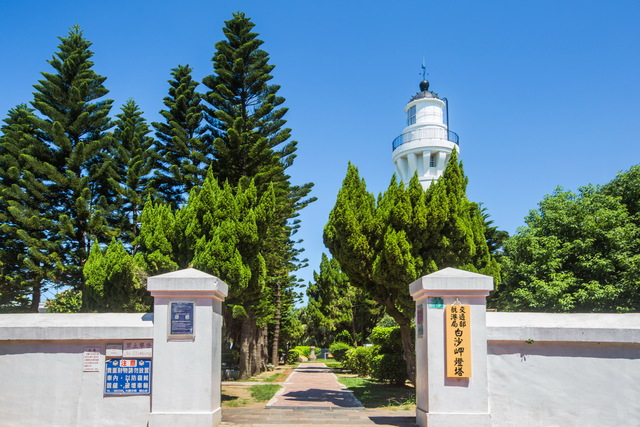Cape Baisha Lighthouse Introduction
Baisha Cape Lighthouse is located on the Guanyin Coast. Before the establishment of the Guosheng Lighthouse in Tainan, it was the westernmost lighthouse on Taiwan's main island. There is a circular trail around it, and visitors can also explore the Guanyin Coastal Recreation Area. The lighthouse, with its snow-white tower, stands out even more against the blue sky and sea. Since it was lit and put into operation in 1901, it has been a famous scenic spot in Taiwan since the Japanese colonial period. After more than a century, it was selected as one of the "Hundred Historical Buildings in Taiwan" by the Council for Cultural Affairs in 2001. The main structure of the lighthouse, the surrounding wall, and the sundial from the Japanese era were announced as Taoyuan's first county-designated historic site the following year. In May 2021, it was announced as Taoyuan's second national historic site and is currently the most well-preserved lighthouse from the early Japanese colonial period in Taiwan. The height of the Baisha Cape Lighthouse is about 37 meters, making it second only to the Eluanbi Lighthouse in Kenting. Its uniqueness lies in being the only lighthouse in Taiwan constructed from red bricks and stones, unlike other lighthouses made of concrete. Towards the end of the Qing dynasty, most of the lighthouse equipment was imported from Britain and France. The manufacturer first finished casting the tower, lighting fixtures, and other components before shipping them to the designated location for assembly, taking three years to complete. However, the Baisha Cape Lighthouse was not assembled from cast iron; it features a dual-layer brick structure known in Japanese as "renkako," which is seismically resistant. The upper part of the circular brick lighthouse is supported by large stones to hold the cast iron top, having withstood aerial bombardment during World War II and multiple earthquakes without severe damage. The lighthouse still stands firm today, illuminating the Taiwan Strait and safeguarding maritime vessels. The construction of the tower and its internal facilities spans over a century, and it still preserves a sundial from the Japanese era, which was crucial for determining time, direction, and latitude based on the shadows cast by the sun. There is also a clock manufactured by the Shanghai Machinery Bureau and a century-old neem tree that has existed since the Japanese colonial period, still standing tall in the garden, creating a tranquil atmosphere. This beacon of the Taiwan Strait is surrounded by a peaceful environment, featuring small bridges, flowing water, rice fields, and ponds, along with wooden walkways and cool paths. The lighthouse itself makes for a great background for photos, and bicycles can be parked along the road before entering the park on foot. Inside the park, there is an information room for visitors to learn more about the various facilities in the lighthouse. Next to the lighthouse, there are a circular trail, a park, pavilions, a square, and children's play equipment. The trail runs along the Guanyin River, providing views of the famous windmills along the Guanyin coastline, while the bell tower square and the Guanyin River pedestrian arch bridge are popular spots for wedding photos.









































